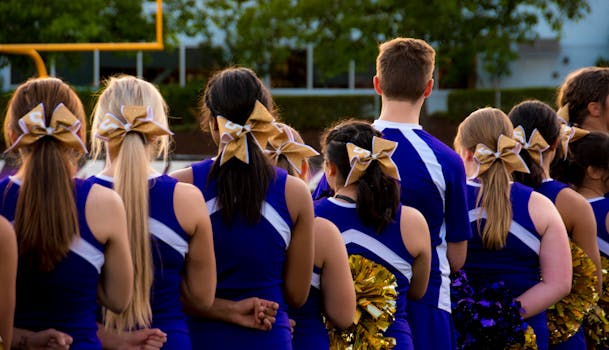Cheerleading: Acrobatics and Synchronized Dance to Support the Team
Cheerleading has evolved significantly since its inception in the late 19th century. Originally a male-dominated activity, it has transformed into a dynamic sport that combines acrobatics, dance, and team spirit. Today, cheerleaders are not just sideline supporters; they are athletes who perform intricate routines that require strength, coordination, and creativity. This article explores the multifaceted nature of cheerleading, highlighting its acrobatic elements, synchronized dance routines, and the vital role it plays in supporting sports teams.
The Evolution of Cheerleading
Cheerleading began in 1898 when Johnny Campbell led the first organized cheer at a football game at the University of Minnesota. Over the decades, it has grown from simple chants to a complex sport that includes gymnastics and dance. The National Cheerleaders Association (NCA) was founded in 1948, further formalizing cheerleading as a competitive activity.
From Sidelines to Competitions
Modern cheerleading is divided into two main categories: traditional cheerleading and competitive cheerleading. Traditional cheerleading focuses on supporting teams during games, while competitive cheerleading involves teams performing choreographed routines in competitions. According to the American Association of Cheerleading Coaches and Administrators (AACCA), there are over 3 million cheerleaders in the United States, with a significant number participating in competitive cheerleading.
Acrobatics: The Athletic Core of Cheerleading
One of the most striking aspects of cheerleading is its acrobatic component. Cheerleaders perform stunts, tumbles, and pyramids that require extensive training and physical fitness. The acrobatic skills involved in cheerleading can be categorized into several key areas:
- Stunts: These are coordinated lifts and formations where one or more cheerleaders are elevated off the ground. Stunts can range from simple shoulder sits to complex pyramids involving multiple layers of cheerleaders.
- Tumbling: This includes gymnastic elements such as flips, handsprings, and cartwheels. Tumbling adds a dynamic flair to routines and showcases the athletes’ agility and strength.
- Pyramids: These formations involve multiple cheerleaders working together to create a stable structure. Pyramids require precise timing and teamwork, as well as a strong foundation of trust among team members.
Statistics show that cheerleading injuries are common, with the National Center for Catastrophic Sport Injury Research reporting that cheerleading accounts for 66% of all catastrophic injuries in female high school athletes. This highlights the importance of proper training and safety measures in the sport.
Synchronized Dance: The Art of Performance
In addition to acrobatics, synchronized dance is a crucial element of cheerleading. Dance routines are choreographed to music and often incorporate various styles, including jazz, hip-hop, and contemporary dance. The synchronization of movements among team members is essential for creating visually appealing performances.
The Importance of Choreography
Choreography in cheerleading serves several purposes:
- Team Unity: A well-choreographed routine fosters a sense of unity among team members, as they must work together to achieve a common goal.
- Audience Engagement: Engaging choreography captures the attention of the audience, enhancing the overall experience of the event.
- Competitive Edge: In competitions, judges evaluate routines based on creativity, execution, and synchronization. A unique and well-executed dance routine can significantly impact a team’s score.
Supporting the Team: The Heart of Cheerleading
At its core, cheerleading is about supporting athletic teams and fostering school spirit. Cheerleaders play a vital role in energizing the crowd and motivating players. Their presence can significantly influence the atmosphere of a game, creating an environment that encourages teamwork and perseverance.
Community and School Spirit
Cheerleading also promotes community involvement and school pride. Many cheerleading squads participate in community service and outreach programs, further solidifying their role as ambassadors for their schools. This connection to the community enhances the overall experience for both cheerleaders and fans.
Conclusion: The Multifaceted Nature of Cheerleading
Cheerleading is a unique blend of acrobatics, synchronized dance, and team support. As it continues to evolve, it remains a vital part of the sports culture, providing entertainment and fostering school spirit. The athleticism required for stunts and tumbling, combined with the artistry of dance, makes cheerleading a compelling sport that deserves recognition. As we celebrate the dedication and talent of cheerleaders, it is essential to acknowledge their contributions to the teams they support and the communities they represent.
